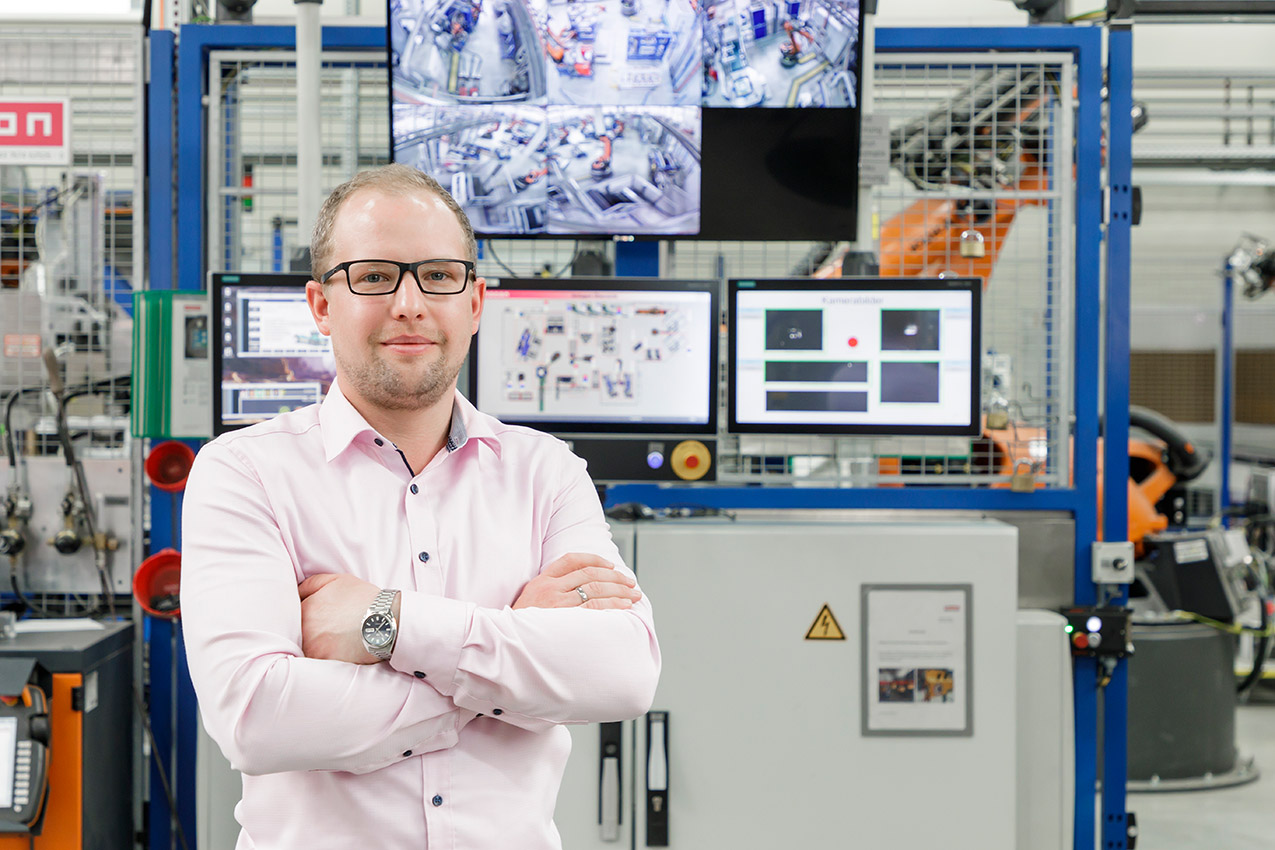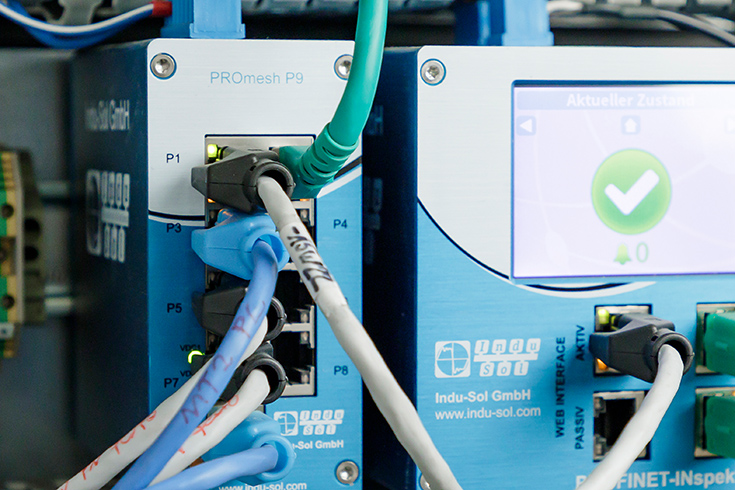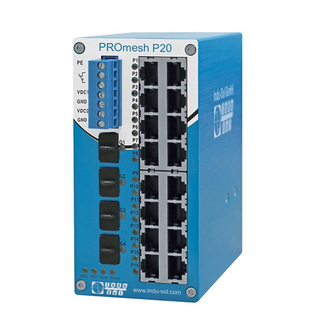
Tracking down the causes of communication issues
OT diagnosis switches improve transparency of the steamer production line
Automated production heavily relies on time efficiency, as every downtime can result in significant financial losses. When errors occur, it is crucial to prioritize the mechanical components and check whether sensors, actuators, and control technology are functioning correctly. Nevertheless, the network's relevance to a resilient system is often neglected. Network-related issues can create "troublemakers" that cause challenging-to-reproduce errors, further leading to production line downtime. Imperial-Werke's maintenance team at Bünde can confirm this, based on their day-to-day experiences.
At Miele's Bünde plant, around 700 employees manufacture gas and ceramic hobs, (pressure) steam stoves, and warming drawers. With approximately 500,000 devices leaving the facility annually, the operating technology team's smooth and safe production is crucial. However, network failures can still cause sporadic and unclear issues that result in steam cooker production line downtime. The maintenance staff at the facility aims to identify and address the root cause of these issues.
Creating transparency
The production of cooking chambers for steam cookers involves converting stamped stainless-steel sheets through various forming and welding processes in an automated system. The individual robot cells are interconnected, and the blanks are passed from station to station until a new cooking chamber leaves the production line every two minutes. However, despite the automated system, the plant engineering team at Miele’s Bünde plant experienced sporadic failures, and the root cause was difficult to identify.
As Jan Rüter, Head of Plant Engineering at Miele’s Bünde plant, explains, "We kept experiencing sporadic failures and couldn't track what was causing them. Since we suspected that the entire network was at fault rather than any individual machines, our colleagues from our plant in Bielefeld lent us their PROFINET-INspektor®. That was a first important step towards finding the cause!"
The data evaluation from the PROFINET-INspektor® confirmed that the fault was in the communications network, specifically the electromagnetic compatibility (EMC). To address this issue, Miele's plant engineering team used PROmesh P9 and P20 industrial Ethernet switches to continuously monitor equipotential bonding and detect the exact time, frequency (with a sampling rate of 25 KHz), and intensity (with a measuring range of 0 to 10 A) of EMC couplings in data lines. Additionally, the switches are managed to provide access to communication data, enabling permanent network monitoring (Fig. 5)

Fig. 2: Jan Rüter, Head of Operations Technology at Miele in Bünde: “We kept experiencing sporadic failures and couldn’t really track what was causing them.” (author: Miele)
The ability to monitor the network continuously helps identify sporadic and non-reproducible events and their root causes, thereby ensuring optimal network performance. In instances where the network's data traffic exceeds a switch's performance limit, data loss (discards) can occur. These events are displayed as port statistics on an integrated web interface alongside other pertinent metrics such as errors, error telegrams, and netload/ms.
Wilhelm Kröger, team leader for machine and plant technology at the Bünde plant, explains the impact of this monitoring: "We are now also able to determine the causes of our problems. We have large interference currents in phases, and they ultimately affect network communications since we use many welding applications." With this insight, the plant engineering team can take proactive steps to address the root cause and prevent such interference from affecting network performance in the future.
From IT to OT switch
Classic IT switches were installed at Miele’s Bünde plant in the past. They were managed by the IT department. This brought several disadvantages at once: The maintenance department staff did not have any access to the switches. The switches also do not meet the OT requirements for PROFINET certification, Netload Class (robustness against the network traffic to be processed) and Conformance Class (scope of PROFINET functions). At the same time, these switches do not offer any diagnostic functions, such as leakage current measurement. These would help with the operation of an OT network.
"Before any new switches are deployed in a larger enterprise, it’s not just maintenance that needs to be convinced by the hardware," explains Wilhelm Kröger (Fig. 6), team leader for machine and plant technology at the Bünde plant.
"The support responsibilities of individual production areas also had to be rethought together with IT. There are, of course, many requirements such a device needs to meet before we can use it. It was a relief for us that we could first borrow a switch from Indu-Sol and test it extensively. The tests very quickly showed that the causes of network faults, still unknown at the time, could be made transparent quickly and easily. The network experts also developed a firmware add-on to meet Miele’s IT security requirements to enable final deployment."
Horst Voigt (Fig. 7), key account manager at Indu-Sol, adds: “It is important to us to be able to offer our customers an ideal solution. If the client involves us in the decision-making process as well as Miele did, such individual adjustments are easy enough to implement.”
The manufacturer’s maintenance staff also found the advanced training useful. They are essentially electricians, rather than network experts. Therefore, Indu-Sol not only instructed the maintenance team in the use of the switches but also provided all essential content on the subject of data networks. Mr. Kröger recalls: “What are the technical terms? What difficulties may appear? How do they become evident? How can we fix them? We have quickly gained an insight into the ‘secret machinations’ of the network. It was very helpful. It is just as useful that we are getting answers and support from the network experts when we have specific questions, which usually only arise in our day-to-day work.”
Creating transparency is the first step toward finding a solution
Solving a problem starts with understanding it, but knowing the causes of an issue is not enough to solve it. In the case of the manufacturer's welding applications, high-frequency ignition creates electromagnetic interference radiation that affects data lines and disrupts manufacturing steps, leading to lost data packets, abnormal plant behavior, and potential downtime. Rüter explains: “Now we are working on replacing plasma welding with a process that offers the same speeds and quality while generating less leakage current. Of course, this is not a trivial task.” As the example shows, not all sources of error could simply be eliminated or mitigated. Therefore, the maintainers are also interested in knowing about other people’s experiences at this point and possible solutions for the causes of network communication issues. “We would also be happy to exchange information with maintenance staff from other companies on their experiences and approaches to solutions here,” says Rüter.

Fig. 8: PROmesh switches in the central control cabinet of the steam oven production line at Miele (author: Imperial)
Simple integration
Once the decision to use new switches was made, the next step was, of course, their integration. All in all, integration of the PROmesh switches was very simple (Fig. 8). Dirk Blöcker, an operating technician at Miele in Bünde, Germany, remembers: “Since we installed all of our switches in a remote-control cabinet rather than directly in the plant, we only had to replace them at one point. We prepared the exchange well together with Indu-Sol. It only took a little over half a day for the plant to return to productive operation.”
The manufacturer of built-in kitchen appliances was happy with the transparency this added to their network communications with the new switches. The maintenance employees are also grateful for what they have learned along the way. While some brought plenty of prior knowledge to the table, all of them learned a lot of helpful information on network communication in a short time through the training and the exchange with Indu-Sol. This deeper understanding also ultimately ensures fail-safe production today, with high-quality products at the end of the line. Blöcker summarises: “Our practical experience shows that the boundaries between machine and IT networks are becoming less and less clear. Therefore, it is going to be important in the future that maintenance staff understand more and more about network communication and also have access to the production network. In the end, the right switch is the key to success here.”
About Miele
Miele is the world’s leading supplier of premium domestic appliances for cooking, baking, steam cooking, refrigeration/freezing, coffee preparation, dishwashing, laundry, and floor care areas. They also make dishwashers, air cleaners, washing machines, and dryers for commercial use, as well as washer-disinfectors and sterilizers for medical facilities and laboratories (Professional business area). Founded in 1899, the company maintains eight production sites in Germany, one plant each in Austria, the Czech Republic, China, Romania, and Poland, as well as the two plants of Italian medical technology subsidiary Steelco Group. Sales in fiscal 2020 amounted to around 4.5 billion euros (of which in Germany: 29.5 percent). Miele is represented in almost 100 countries/regions by its own sales companies or through importers. Now in its fourth generation, the family-owned group employs around 20,900 people around the world, with about 11,050 of them in Germany. Headquartered in Gütersloh in Westphalia.




